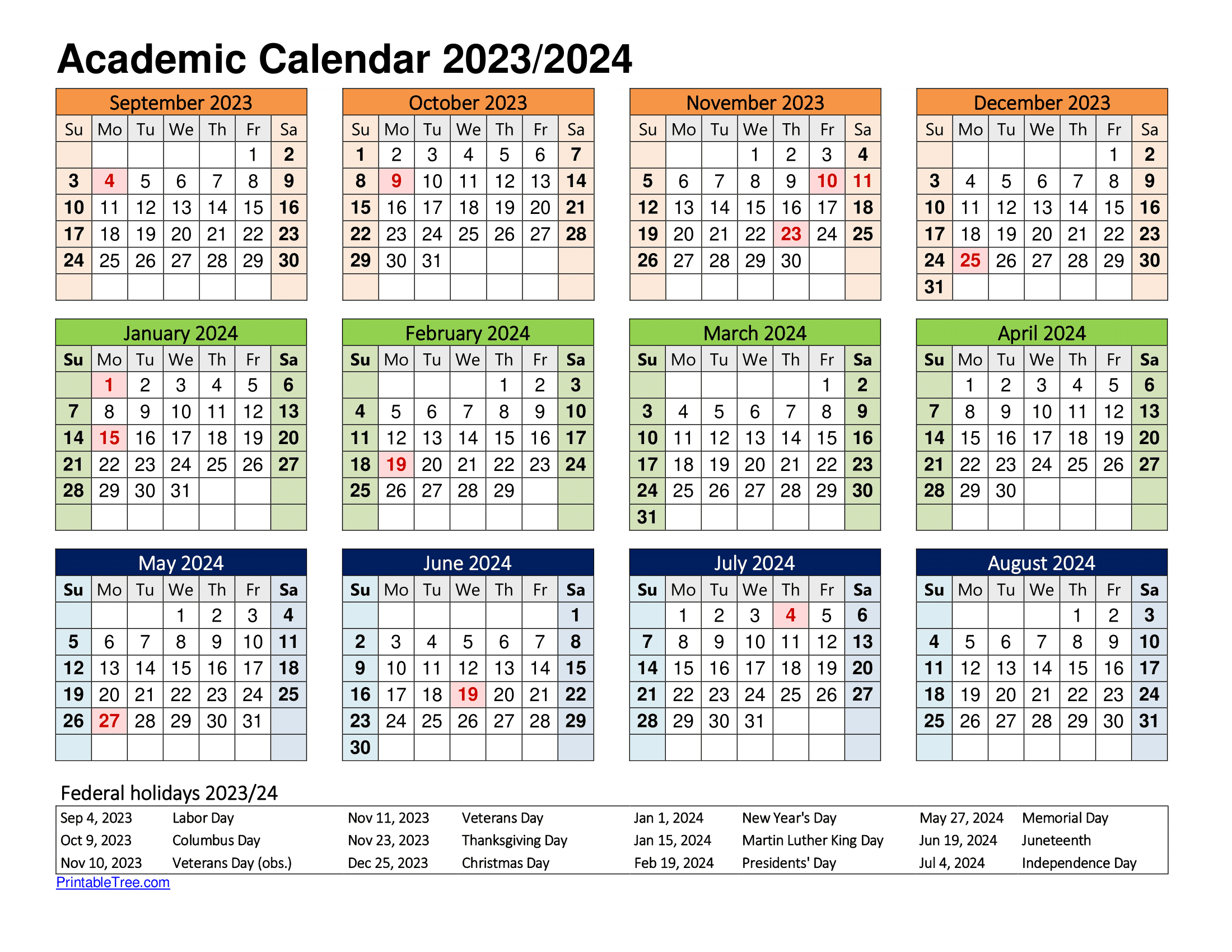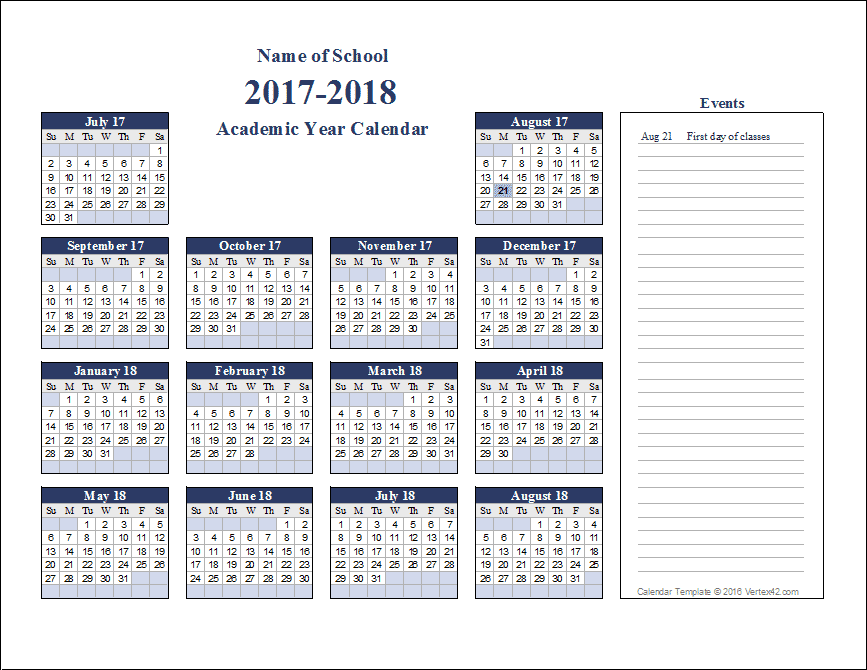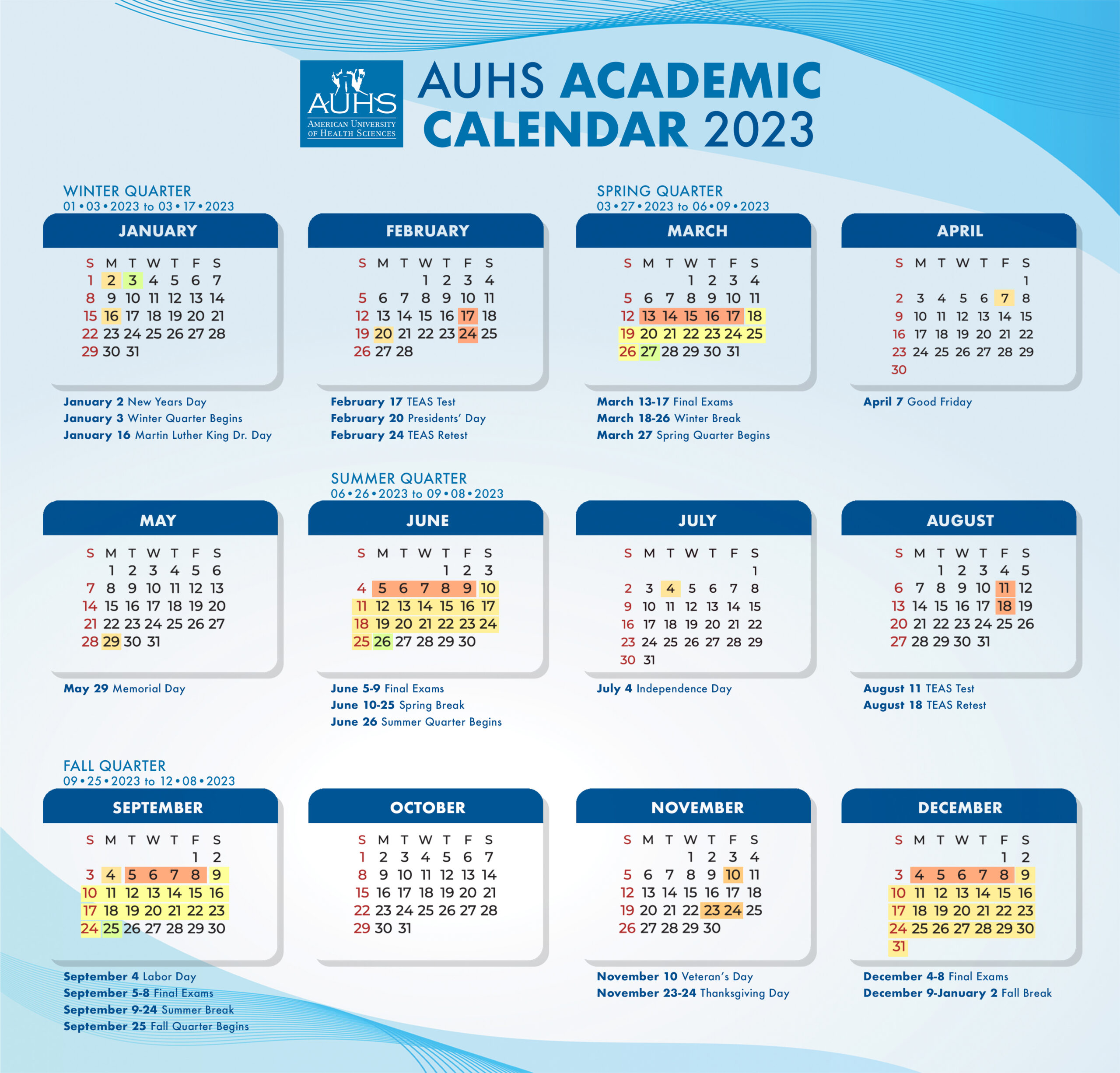The National University Calendar sets the stage for this enthralling narrative, offering readers a glimpse into a story that is rich in detail and brimming with originality from the outset. It’s basically the big boss of academic schedules, outlining all the important dates for uni life across the whole country.
Think of it as the ultimate guide to navigating your studies, from exam dates to registration deadlines and everything in between.
This calendar is like a secret weapon for students, helping them stay on top of their game and avoid any nasty surprises. It’s a lifesaver for planning out your studies, making sure you’re not cramming for exams last minute, and keeping your social life in check.
What is a National University Calendar?

A national university calendar is a standardized schedule that Artikels the academic year for universities within a particular country. It dictates key dates like the start and end of semesters, holidays, and exam periods.
Purpose of a National University Calendar
National university calendars are crucial for ensuring uniformity and coordination across universities within a country. They provide a shared framework for academic activities, facilitating smooth transitions for students, faculty, and administrative staff. This standardized approach simplifies the planning and execution of academic programs, ensuring consistency in academic timelines and deadlines.
Key Features of a National University Calendar
National university calendars typically include:
- Academic Year Dates:The start and end dates of the academic year, usually divided into semesters or trimesters.
- Semester/Trimester Dates:The specific dates for each semester or trimester, including start and end dates, mid-term breaks, and exam periods.
- Holidays:National and religious holidays observed within the country.
- Registration Periods:Deadlines for course registration and withdrawal.
- Exam Schedules:Dates and times for mid-term and final exams.
- Graduation Dates:Dates for graduation ceremonies.
Variations in National University Calendars Across Countries
National university calendars can vary significantly across countries due to differences in:
- Academic Traditions:Some countries follow a semester system, while others use trimesters or a continuous system.
- Cultural and Religious Practices:Different countries observe different holidays and religious festivals, impacting the academic calendar.
- Climate:In some countries, the academic calendar may be adjusted to avoid extreme weather conditions.
For example, in the United States, most universities follow a semester system with two main semesters, typically starting in late August or early September and ending in May. In contrast, universities in the United Kingdom often operate on a trimester system, with three terms running from October to June.
Types of Events Included

A national university calendar is a comprehensive guide that Artikels all significant academic events throughout the year. It serves as a vital resource for students, faculty, and staff, ensuring everyone is informed about important dates and deadlines.
Academic Events
Academic events are the cornerstone of a university calendar. They encompass all activities related to teaching, learning, and research. Here’s a breakdown of some common academic events and their significance:
| Event Name | Description | Typical Duration |
|---|---|---|
| Semester Start/End Dates | Marks the beginning and end of academic semesters, defining the periods for teaching, learning, and assessments. | 15-18 weeks |
| Class Schedules | Provides a detailed timetable for each course, outlining lecture, tutorial, and lab sessions. | Weekly, based on semester duration |
| Midterm/Final Exams | Scheduled periods for students to demonstrate their understanding of course material through written or oral examinations. | 1-2 weeks |
| Registration Periods | Timeframes for students to enroll in courses for the upcoming semester, choosing their subjects and schedules. | 1-2 weeks |
| Drop/Add Deadlines | Specific dates by which students can add or drop courses, adjusting their academic load based on their needs. | Within the first few weeks of each semester |
| Academic Advising Sessions | Opportunities for students to meet with advisors and discuss academic progress, course selection, and career planning. | Throughout the semester, typically during designated periods |
| Research Conferences | Gatherings where academics present their research findings, fostering knowledge sharing and collaboration within their fields. | 1-3 days |
Administrative Events
Administrative events are essential for the smooth functioning of the university. They cover a range of activities, including:
| Event Name | Description | Typical Duration |
|---|---|---|
| University Holidays | Designated days off for faculty, staff, and students, typically aligning with national or religious holidays. | 1-3 days |
| Orientation Programs | Introductory sessions for new students, providing information about university policies, resources, and student life. | 1-2 days |
| Graduation Ceremonies | Formal events to celebrate the achievements of graduating students, marking the culmination of their academic journey. | 1-2 days |
| Faculty Meetings | Regular gatherings of faculty members to discuss academic matters, curriculum development, and departmental issues. | Weekly or monthly |
| Board of Governors Meetings | Formal meetings of the university’s governing body, responsible for making key decisions related to policy, finance, and strategic planning. | Monthly or quarterly |
Importance for Students

A national university calendar serves as a vital tool for students, enabling them to effectively plan and manage their academic journey. It provides a centralized platform that consolidates all important dates and deadlines, allowing students to stay organized and avoid missing crucial events.
Course Registration, National university calendar
The national university calendar plays a crucial role in the course registration process. It Artikels the specific registration periods, deadlines, and any relevant procedures. Students can use this information to plan their course selection strategically, ensuring they enroll in the desired courses within the designated timeframe.
Exam Preparation
The calendar clearly indicates exam dates and schedules, giving students ample time to prepare effectively. By knowing the exam dates well in advance, students can allocate sufficient time for studying, review sessions, and practice tests. This proactive approach helps them avoid last-minute cramming and ensures they are adequately prepared for their exams.
Extracurricular Activities
The national university calendar also includes information about extracurricular activities, such as clubs, societies, and events. This allows students to plan their participation in these activities while balancing their academic commitments. By knowing the dates and times of extracurricular events, students can make informed decisions about their involvement and avoid scheduling conflicts.
Time Management
By utilizing the national university calendar, students can effectively manage their time and avoid scheduling conflicts. The calendar provides a comprehensive overview of all academic and extracurricular activities, enabling students to create a realistic schedule that balances their academic, social, and personal commitments.
Importance for Faculty
A national university calendar serves as a crucial tool for faculty, providing a centralized platform for organizing and managing their diverse responsibilities. It acts as a compass, guiding them through the academic year, ensuring smooth operations, and facilitating effective communication and collaboration.
Scheduling Lectures and Exams
The calendar serves as a blueprint for faculty to schedule their lectures, tutorials, and exams. It helps them allocate time for different courses, ensuring that they do not overlap, and providing students with a clear understanding of the academic schedule.
By consulting the calendar, faculty can avoid scheduling conflicts and ensure that exams are held at appropriate times, minimizing disruption to students’ learning schedules.
Managing Deadlines
The calendar provides a comprehensive overview of all academic deadlines, including assignment submission dates, project milestones, and exam periods. This enables faculty to manage their workload effectively, setting realistic deadlines for students and ensuring that they have ample time to complete their academic tasks.
Facilitating Communication and Coordination
The national university calendar promotes communication and coordination between faculty members. It allows them to share information about their teaching schedules, research activities, and administrative responsibilities. This shared understanding helps faculty members avoid scheduling conflicts, collaborate on projects, and ensure that all academic activities are aligned.
Technological Integration

In today’s digital age, integrating technology into national university calendars is essential for enhancing accessibility, functionality, and overall efficiency. This integration allows for seamless communication, improved organization, and a more user-friendly experience for students, faculty, and administrative staff.
The national university calendar, with its meticulously planned semesters and breaks, offers a predictable rhythm to academic life. However, even the most structured schedule can be disrupted by unforeseen circumstances, much like the unpredictable crowds at Cedar Point, a popular amusement park whose attendance patterns can be tracked on a dedicated cedar point crowd calendar.
Similarly, a national university calendar might be altered due to unforeseen events, requiring adjustments and adaptability, just as a park visitor might need to adjust their plans based on crowd levels.
Digital Platforms and Tools
The use of digital platforms and tools is crucial for managing and sharing national university calendars effectively. These platforms offer a centralized location for all calendar information, ensuring consistent access and real-time updates.
- Learning Management Systems (LMS):Platforms like Canvas, Moodle, and Blackboard are widely used in universities and can integrate calendars directly into the learning environment. This allows students to view assignments, deadlines, and other important events alongside their course materials.
- University Websites:Most universities have dedicated sections on their websites for academic calendars. These calendars can be accessed by anyone, providing a public platform for sharing essential dates and information.
- Mobile Applications:Mobile apps specifically designed for university calendars offer a convenient way for students and faculty to access and manage their schedules on the go. These apps often provide push notifications for upcoming events, ensuring that users stay informed.
- Calendar Synchronization:Many digital platforms allow for calendar synchronization with popular services like Google Calendar, Outlook Calendar, and Apple Calendar. This enables users to integrate their university calendar with their personal schedules, streamlining their overall planning.
Benefits of Technological Integration
The integration of technology into national university calendars offers numerous benefits, enhancing communication, collaboration, and overall efficiency.
- Improved Communication:Digital platforms provide a centralized location for sharing updates, announcements, and important information related to the calendar. This eliminates the need for multiple communication channels, reducing confusion and ensuring that everyone receives the same information.
- Enhanced Collaboration:Technology facilitates collaboration by allowing different departments and stakeholders to contribute to and manage the calendar. This ensures that all events, deadlines, and important dates are accurately reflected, promoting a unified and cohesive approach to university planning.
- Increased Accessibility:Digital calendars can be accessed from any device with an internet connection, providing students, faculty, and staff with 24/7 access to their schedules. This eliminates the need for physical copies and ensures that everyone has the information they need, regardless of location.
- Real-time Updates:Digital platforms allow for instant updates to the calendar, ensuring that everyone has access to the most current information. This eliminates the possibility of outdated information and promotes timely communication and decision-making.
Future Trends
The landscape of higher education is constantly evolving, driven by globalization, technological advancements, and changing student demographics. These forces will continue to shape the development and use of national university calendars in the years to come.
Impact of Globalization
Globalization has led to a surge in international student mobility, with students seeking educational opportunities abroad. National university calendars must adapt to accommodate this trend.
- Harmonization of Academic Calendars:There is a growing need for harmonization of academic calendars across different countries to facilitate student exchange programs and joint degree initiatives. For example, the European Credit Transfer and Accumulation System (ECTS) has standardized credit systems and academic calendars within the European Union, enabling seamless student mobility.
- Flexibility and Adaptability:National university calendars must be flexible enough to accommodate students from diverse backgrounds and academic systems. This could involve offering more flexible course schedules, including options for online learning and blended learning models.
Technological Advancements
Technological advancements are revolutionizing the way students learn and access education.
- Personalized Learning:Technology allows for personalized learning experiences, with students accessing educational resources at their own pace and in their own time. This requires national university calendars to be more flexible and adaptable to accommodate different learning styles and schedules.
- Online Learning:Online learning platforms are becoming increasingly popular, allowing students to access courses and programs from anywhere in the world. This trend necessitates a shift towards more flexible and adaptable national university calendars that accommodate online learning formats and asynchronous delivery models.
Changing Student Demographics
The student population is becoming increasingly diverse, with students from different age groups, backgrounds, and learning styles.
- Lifelong Learning:As the workforce evolves, there is a growing demand for lifelong learning opportunities. National university calendars must cater to the needs of working professionals and mature students who may require flexible learning options and non-traditional academic schedules.
- Diverse Learning Needs:Students have diverse learning needs and preferences. National university calendars must be flexible enough to accommodate different learning styles, including blended learning, online learning, and accelerated programs.
Essential Questionnaire
What happens if I miss a deadline on the National University Calendar?
It’s best to get in touch with your uni ASAP, mate. They might be able to help you out, but don’t expect any miracles.
Is the National University Calendar the same for all universities?
The National Calendar is like the big picture, but each uni might have their own specific dates for things like exams or registration. So, make sure you check out your own uni’s calendar as well.
Can I use the National University Calendar to plan my social life?
You can use it to see when the big deadlines are, so you can plan your social life around them. But don’t forget to check out your own uni’s events calendar for all the fun stuff going on.
